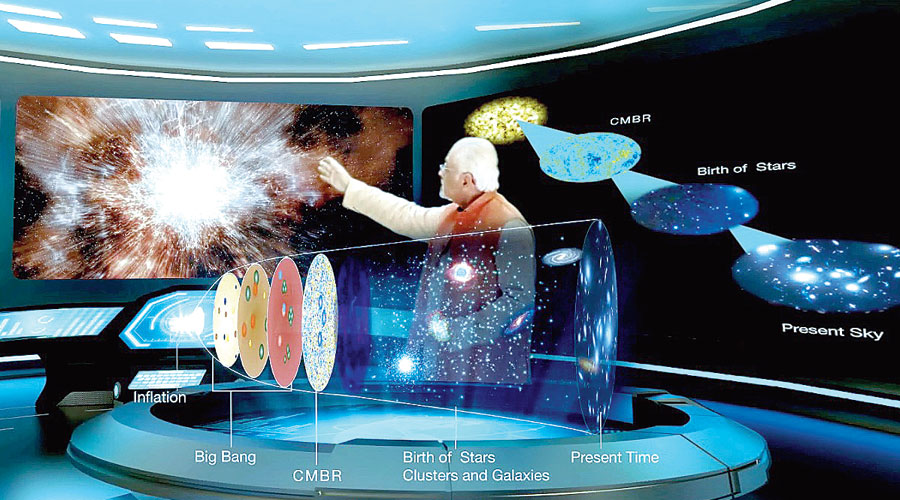A physicist and a designer in Calcutta have jointly produced a 13-part homegrown Web series on astronomy inspired in part by similar but independent initiatives decades ago by a British scientist and an American astronomer.
The first episode of Cosmic Quest, created by Partha Ghose, former professor at the S.N. Bose National Centre for Basic Sciences and Tridibesh Sanyal, a visual communicator, will premiere on December 24 on India Science, a web channel of India’s science and technology ministry.
The series will span the 13.8-billion-year history of the cosmos — from its origin or the Big Bang and the evolution of galaxies and stars to the emergence of human beings and cognition and the gradual accumulation of astronomical knowledge.
Both Ghose and Sanyal say they were inspired by similar series, The Ascent of Man by British scientist Jacob Bronowski in 1973 and Cosmos by the American astronomer Carl Sagan in 1980, but Cosmic Quest will feature unique India-specific angles never attempted before.
“We want this to be a gentle way to introduce astronomy
to everyone — through angles that others have left largely untouched,” said Ghose, who has conceived, written and anchored the series. “Similar efforts in the past have been mostly Euro-centric.”
The series plans to use a mix of 3D animation and graphics, location shoots, possibly even enactments to
drive the narration as Ghose seeks to take viewers across billions of years, while featuring contributions from India — from Vedic astronomy and the links between geometry and astronomy that emerged in the Indus valley civilisation to the discovery of zero by
5th century BC astronomer Aryabhata and his other ideas to India’s orbiters to the Moon and Mars.
“We’re relying hugely on special effects,” said Sanyal, visualiser and director of the series who also composed its music.
“We’re aware that our target viewers are familiar with the visual effects in movies like Avatar and The Avengers.”
The series, its makers say, will seek to provide education through a movie-like and immersive experience using visual and sound effects and musical compositions. The School of Educational Technology at Jadavpur University provided the platform for animation for the series.
“This new series is part of our efforts to carry science to the masses through India Science,” said Nakul Parashar, director of Vigyan Prasar, the science communication unit of India’s science and technology department. “We’re aiming to telecase one episode per week.”











